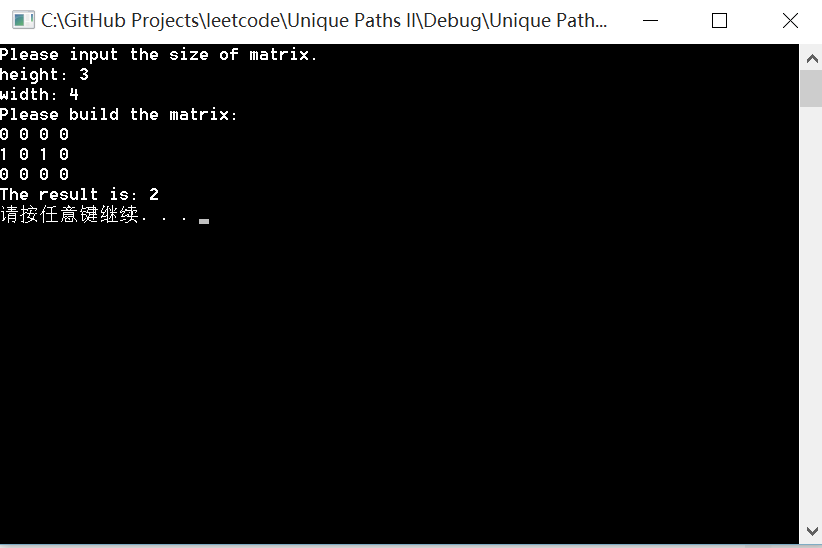一. 题目描述
Follow up for “Unique Paths” :
Now consider if some obstacles are added to the grids. How many unique paths would there be?
An obstacle and empty space is marked as 1 and 0 respectively in the grid.
For example,
There is one obstacle in the middle of a 3 3 grid as illustrated below.
[
[0,0,0],
[0,1,0],
[0,0,0]
]
The total number of unique paths is 2.
Note: m and n will be at most 100.
二. 题目分析
与上一题Unique Paths类似,但要特别注意第一列的障碍。在上一题中,第一列全部是1,但是在这一题中不同的是,第一列如果某一行有障碍物,那么后面的行应该为0。
三. 示例代码
使用动态规划:
#include <iostream>
#include <vector>
using namespace std;
class Solution
{
public:
int uniquePathsWithObstacles(vector<vector<int> > &obstacleGrid)
{
const size_t x = obstacleGrid.size(); // 行数
const size_t y = obstacleGrid[0].size(); // 列数
vector<vector<int> > k;
for (int i = 0; i < x; ++i)
k.push_back(vector<int>(y, 0));
for (int i = 0; i < x; ++i)
{
if (obstacleGrid[i][0] == 0)
k[i][0] = 1;
else
{
for (int p = i; p < x; ++p)
k[p][0] = 0;
break;
}
}
for (int j = 0; j < y; ++j)
{
if (obstacleGrid[0][j] == 0)
k[0][j] = 1;
else
{
for (int q = j; q < y; ++q)
k[0][q] = 0;
break;
}
}
for (int i = 1; i < x; ++i)
{
for (int j = 1; j < y; ++j)
{
if (obstacleGrid[i][j] != 0)
k[i][j] = 0;
else
k[i][j] = k[i - 1][j] + k[i][j - 1];
}
}
return k[x - 1][y - 1];
}
};

四. 小结